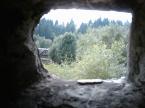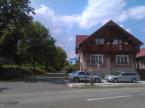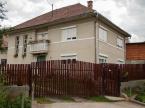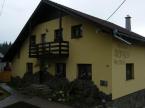Information
WIKI REFRESH Alba Iulia (Hungarian: Gyulafehérvár; German: Karlsburg / Weißenburg) is a city in Alba county, Transylvania, Romania with a population of 66,369, located on the Mureş river.
The main historical area of Alba Iulia is the upper city, developed extensively by Charles VI of the Holy Roman Empire. The Habsburgs renamed the city Karlsburg in honor of Charles. The upper city's citadel was constructed 1716-1735, containing the Gothic Catholic cathedral and the Batthyaneum, a museum founded in 1794. The tomb of John Hunyadi is also located in the cathedral, as is that of the Polish-born Isabella Jagello, Queen of Hungary.
The city is historically important for both Hungarians and Romanians.
History
The city was an important Dacian political, economic and social centre named Apulon, mentioned by the ancient Greek geographer Ptolemy. After the southern part of Dacia became a province of the Roman Empire, the capital of the Dacia Apulensis district was established here, and the city was known as Apulum. Apulum was one of the largest centers in Roman Dacia and the seat of the XIII Gemina Legion.In the 9th century, the city was mentioned under the name of Bălgrad ("White Citadel"), the Hungarian Gestas mention a ruler named Geula/Gyyla/Jula that had discovered the city and made it the capital of his dukedom during 10th century. Following the establishment of the Catholic Transylvanian episcopacy after Stephen I of Hungary adopted Catholicism, the first cathedral was built in the 11th century. The present (Catholic) cathedral was built in the 12th or 13th centuries. In 1442 John Hunyadi, Voivod of Transylvania, used the citadel to make his preparations for a major battle against the Turks. During his reign, the cathedral was enlarged and after his death he was entombed there.
In 1541, Alba Iulia became the capital of the principality of Transylvania, a status it was to retain until 1690. It was during the reign of prince Gabriel Bethlen that the city reached a high point in its cultural history, with the establishment of an academy. Further important milestones in the city's development include the creation of the Batthyanaeum Library in the 18th century, and the arrival of the railway in the 19th century.
In November 1599, Michael the Brave, Voivod of Wallachia, entered Alba Iulia following his victory in the Battle of Şelimbăr and became governor of Transylvania. In 1600 Michael gained control of Moldavia, thereby uniting the three principalities under his rule until his murder in 1601 by Giorgio Basta's agents. Michael's achievement has historic significance for the Romanians, representing the first unification of the three Romanian-populated principalities of Wallachia, Moldavia, and Transylvania.
On December 1, 1918 tens of thousands of Romanians (the exact number is disputed between Romanian and Hungarian historians) gathered in Alba Iulia, to hear the proclamation of the union of Transylvania with the Kingdom of Romania. In 1922, Ferdinand of Romania was symbolically crowned King of Romania in Alba Iulia in an act which mirrored the achievement of Michael the Brave.
György Jakubinyi was appointed archbishop of the archdiocese of Alba Iulia by Pope John Paul II on April 8, 1994.

 English
English









